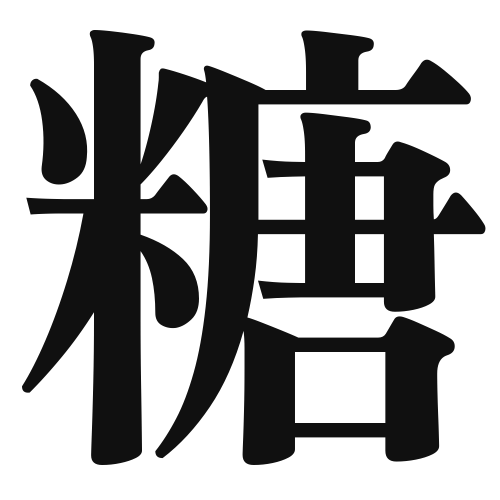1. Overview of Meaning
The kanji “糖” (tō) means “sugar.” It refers to sweet-tasting carbohydrates that are commonly used in food and beverages. Sugar is an essential ingredient in many culinary practices around the world.
2. Formation and Radicals
The kanji “糖” is a phonetic compound (形声文字) that combines the radical for “rice” (米) and the phonetic component “唐” (tō), which relates to the Tang dynasty, often associated with sweetness and luxury.
The radical 米 (rice) suggests a connection to food, while the phonetic part provides the pronunciation.
3. Examples of Usage
Common words and phrases that include “糖” are:
- 砂糖 (さとう, satō) – granulated sugar
- 果糖 (かとう, katō) – fructose
- 糖尿病 (とうにょうびょう, tōnyōbyō) – diabetes
Example sentence in daily conversation:
「このケーキには砂糖がたくさん入っています。」
(This cake has a lot of sugar in it.)
4. Synonyms and Antonyms
Similar kanji with related meanings include:
- 甘 (あま, ama) – sweet, which describes the taste rather than the substance itself.
Antonyms include:
- 苦 (にが, niga) – bitter, which represents a taste opposite to sweetness.
5. Cultural and Historical Background
The kanji “糖” is deeply rooted in Japanese culture, where sugar has been used since ancient times, especially in traditional sweets (和菓子, wagashi). It plays a significant role in various Japanese festivals and ceremonies.
Proverbs and idioms related to sugar include:
- 「甘いものには毒がある」 (あまいものにはどくがある) – “There is poison in sweet things,” which warns about the dangers of overindulgence.
